
Case Study
How Loudoun County, VA Secured Over $17M in Broadband Funding Using Ookla Data to Create Accurate Maps and Challenge FCC Data
Virginia’s Loudoun County is interwoven with rural and suburban landscapes, making it especially difficult for policymakers to understand where the county’s residents are — or are not — able to access the Internet. FCC Form 477 broadband availability data shows that nearly 100% of Loudoun residents have access to what the FCC defines as broadband (25 Mbps download, 3 Mbps upload). This is inconsistent with the connectivity experiences of county residents, so Loudoun Broadband Alliance (LBA) set out to create an accurate, reliable broadband access mapping methodology using real-world network performance data.
Loudoun Broadband Alliance (LBA) chose Ookla® Speedtest Intelligence® to research residents’ actual connectivity and network performance. With this data, LBA identified a large number of unserved households in contrast to FCC data which showed them as served. Loudoun County was subsequently awarded over $17 million of funding to help eliminate the broadband gap.
Situation
In an effort to close the digital divide in rural and urban communities across the nation, the United States federal government has allocated billions of dollars in broadband funding with the American Rescue Plan (ARP) Act. Funding allocation is based on current federal broadband mapping through FCC Form 477 data. For Loudoun County, FCC data reports:

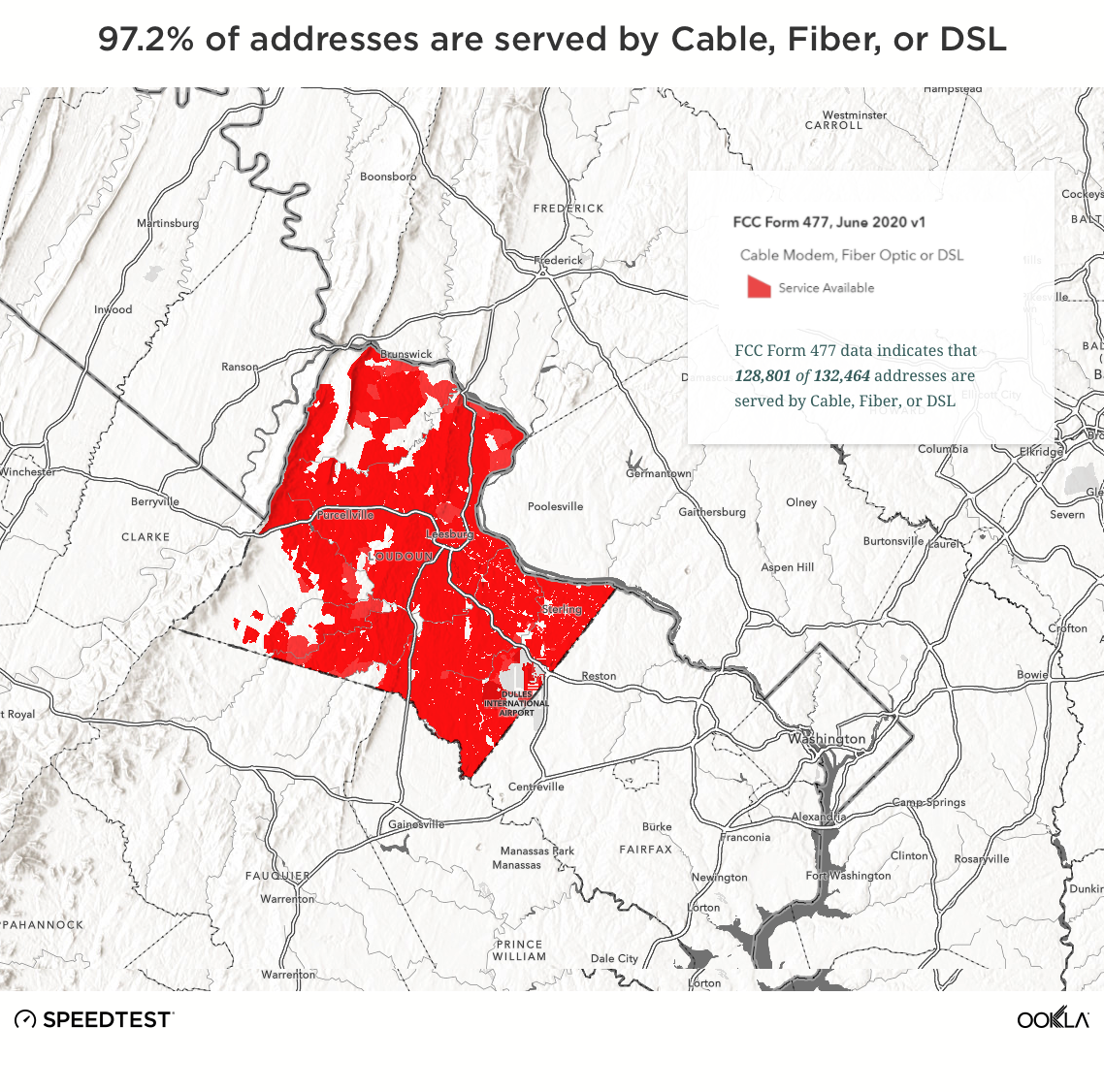
However, the FCC’s findings were not reflective of the real-world network experience of Loudoun County residents. LBA used Speedtest Intelligence data in conjunction with other publicly available datasets to get a more accurate picture of broadband accessibility in their county.
Solution
Through analysis of Speedtest Intelligence data, LBA developed a broadband score, where a score of 100 means that the geolocation has access to FCC minimum broadband requirements. Green areas on the map show locations that are meeting that threshold while the pink spots represent locations where residents do not have access to broadband at all. Aggregating Ookla with LBA’s own local surveys and research, LBA was able to create their own map that showed a more accurate broadband availability map for the county.

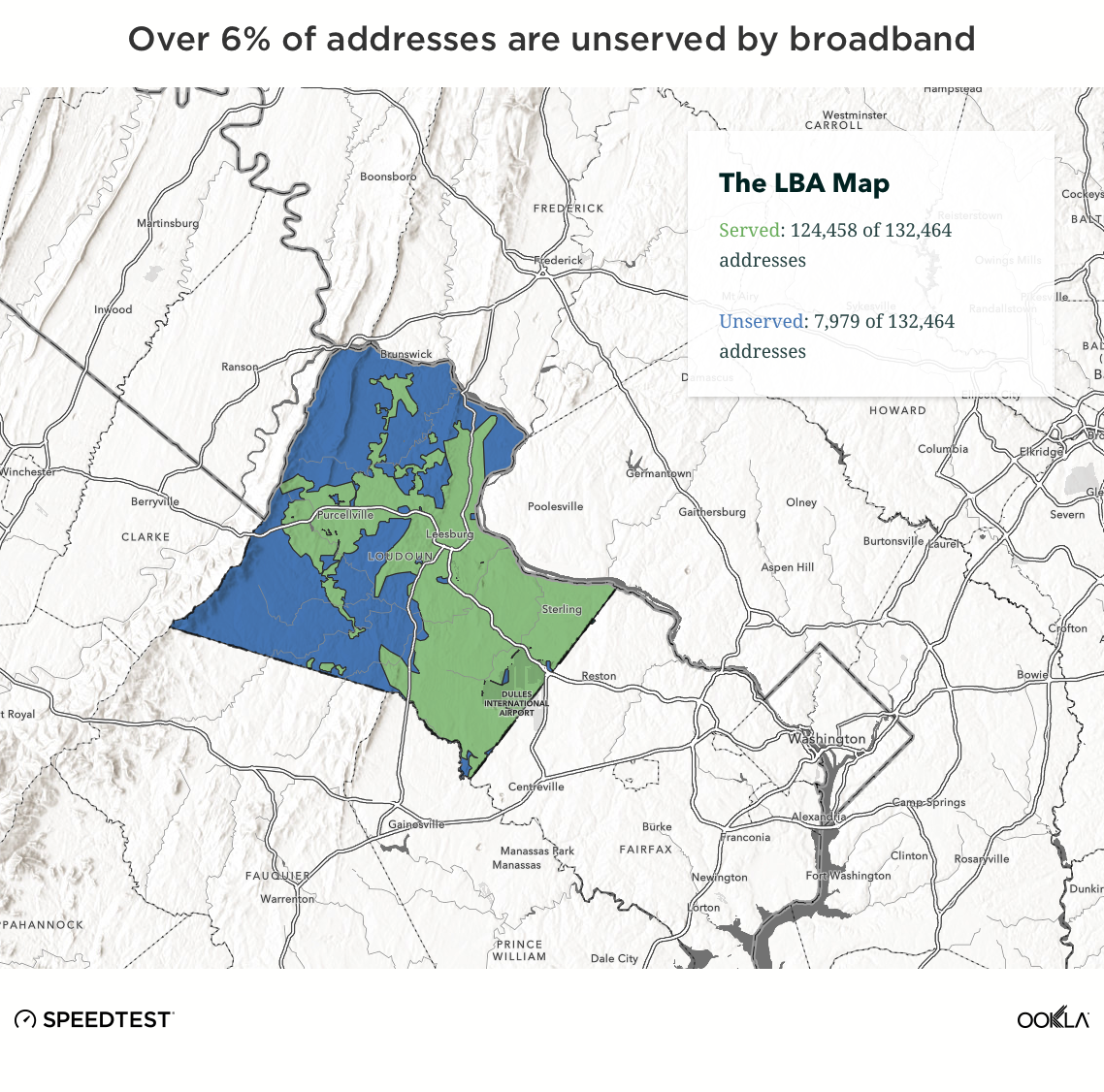
Outcome
Contrary to the FCC’s finding that 99.8% of residents have access to broadband, LBA found that only 93.9% of residents have access to broadband with a minimum download speed of 25 Mbps. This means more than 6% of the addresses (over 8,000 housing units) in the county are underserved. Furthermore, the FCC has been called upon to raise the definition of broadband to a new standard of 100 Mbps download. Under this new definition, more than 10% of the residents of Loudoun County lack access to high-speed Internet. Speedtest results plot where those poor connections exist on the map –– demonstrating the precise geographic boundaries of the digital divide, illustrated with real-world network performance data.
As a result of this work, Loudoun County was awarded over $17M in state-allocated funding through the VATI grant program. LBA demonstrated that accurate and actionable broadband maps can influence policymakers. Ookla empowers local governments to produce accurate broadband maps, challenge FCC data, and secure funding to eliminate the broadband gap in their communities.
Editorial note: This case study was updated on April 25, 2022 to include the broadband funding won by Loudoun County.
About Loudoun Broadband Alliance
Loudoun Broadband Alliance (LBA) is a non-profit that was formed with a vision to promote development of accessible, reliable, and affordable broadband Internet access for the underserved in Loudoun County. LBA’s effort is driven by research, education, and advocacy to help move the community toward that goal.
Ookla retains ownership of this content, including all of the intellectual property rights, data, images, graphs, and analysis. This content may not be quoted, reproduced, distributed, or published for any commercial purpose without prior consent.





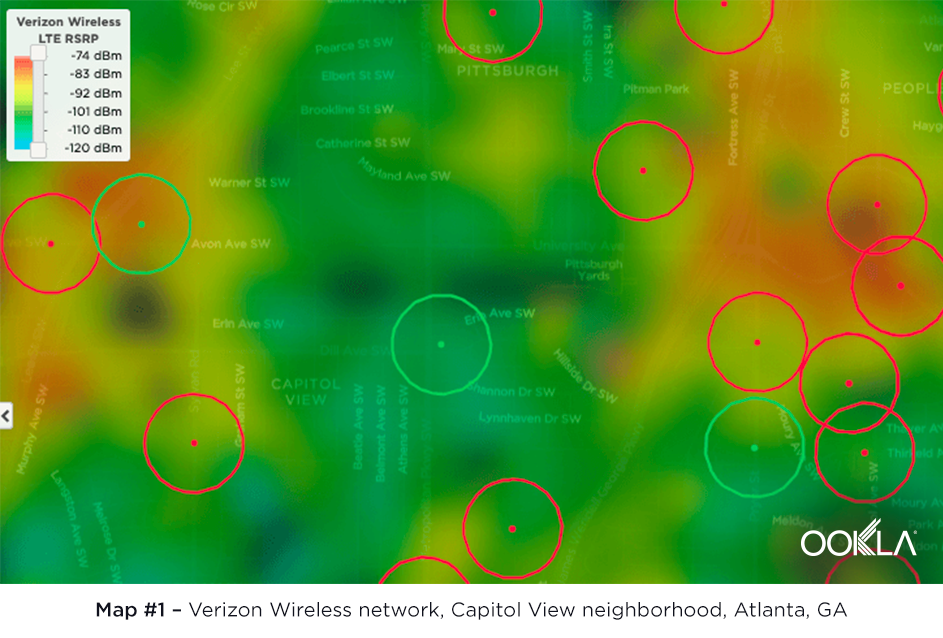



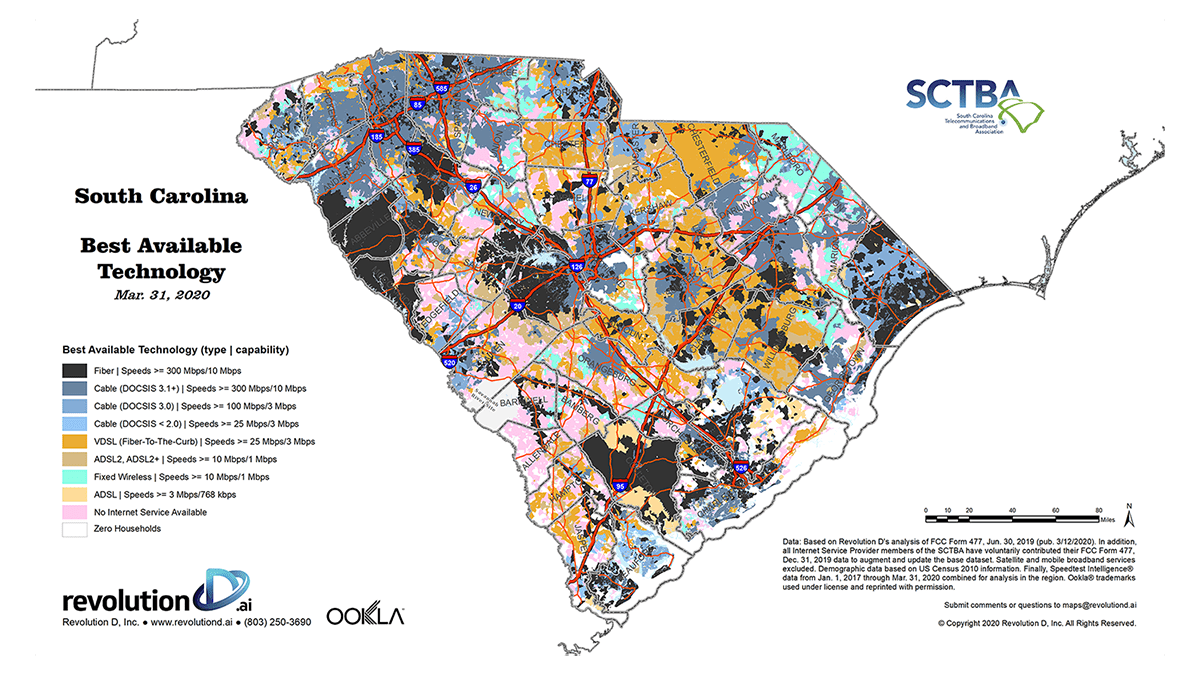
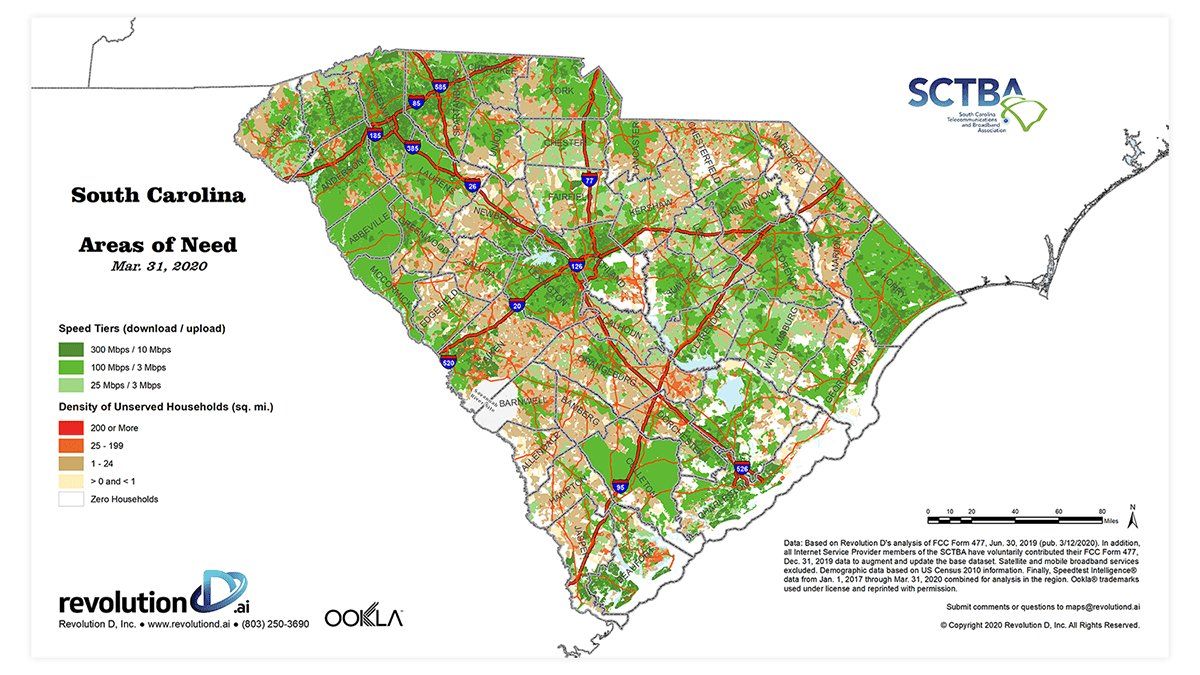 Outcome
Outcome